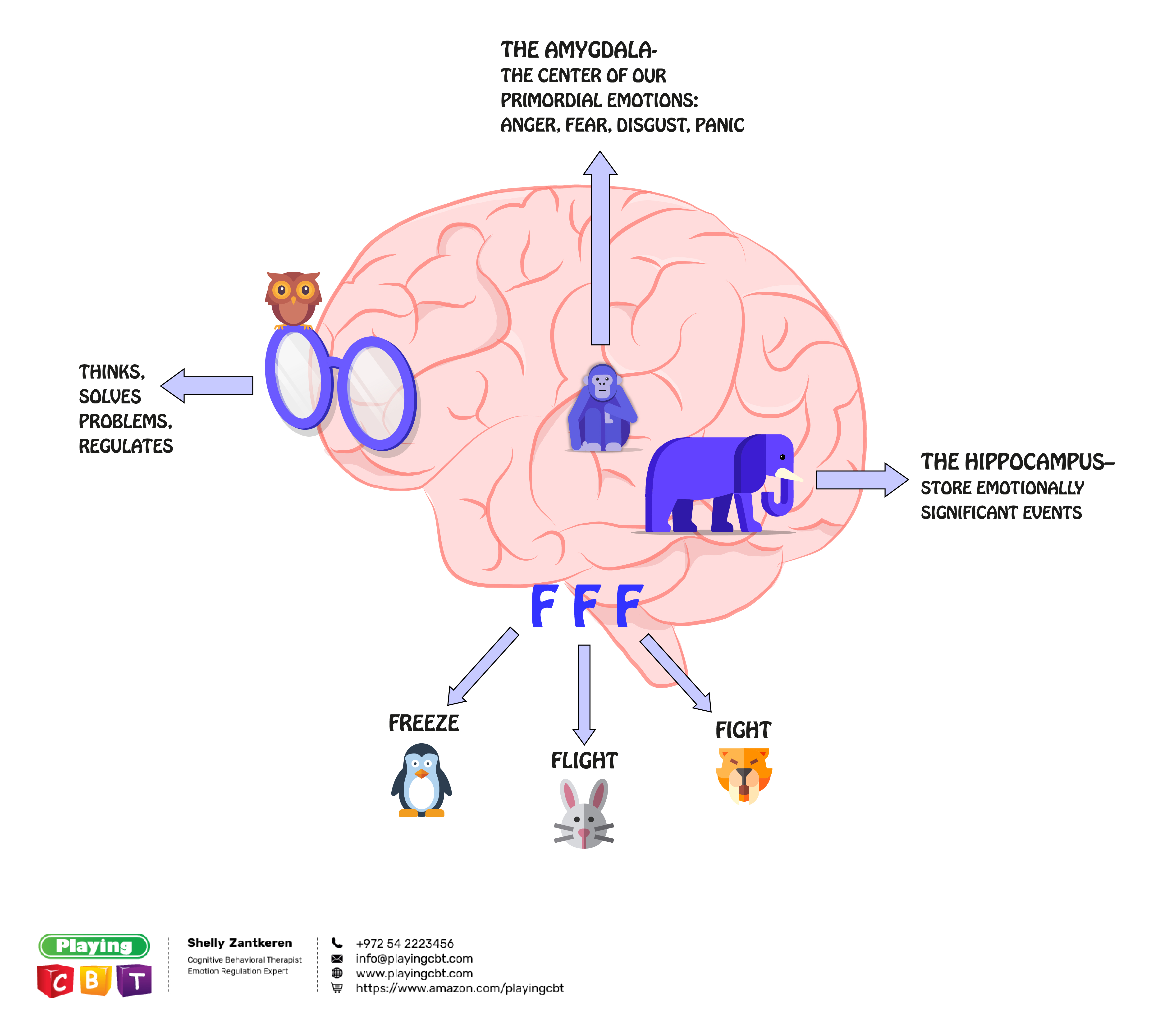
Our brain is like a zoo, filled with lots of different animals where each animal has a different role: The owl sits calmly at the front, ready to solve problems and help calm the monkey down. The monkey examines things with curiosity and decides whether a certain change of situation is good or bad for you. When he spots danger, he runs wild, scaring and agitating all the other animals, except for the owl which he simply throws out, so he can keep making a mess with no one to stop him. The elephant has excellent memory. He sits there pretty quietly but only until he sees something that reminds him of an unpleasant experience. He then immediately alerts the monkey who runs wild all over again. The rabbit is always on the lookout for danger; when he sees the monkey isn’t calm, he quickly runsaway and hides.
The lion waits for the monkey to get started; that’s a sign for him to attack.
And the penguin… the moment he senses that things are going bad, he freezes on the spot, so that everyone will think he’s dead.
Now imagine what would happen in a zoo with an over exaggerating elephant, a hyperactive monkey that’s constantly edgy, or a rabbit that runs and hides even when things are not that bad.
Now let’s have some fun with this. What makes this a good method for explaining the human brain?
Each of us has his personal elephant. The elephant who remembers lots of important things (and sometimes less important) but whatever the memory, he’ll always consider them as important. Therefore, as soon as he recognizes an outside occurrenc, he’ll immediately remember and bring it to our awareness. After that, our monkey automatically starts jumping, triggering his survival mechanism. Then, we have to drive out the owl. It’s not a simple struggle because the owl so quickly runs away, easily allowing the monkey to take his place. The result? We simply lose control. Let’s take a closer look at how we can get the owl to tame the monkey. How do we do it? Step one – identify situations that the elephant considers important – what are they? What are the memories or thoughts that awaken?What do we feel? – The monkey jumps because he feels…How do we behave…The wise owl can help us when…
The Personal Zoo – The blank page can be filled with animals that the children choose: what kind of animals surround us in our daily life? Who runs who in our brain? Let’s build our personal zoo together. Why did we choose these animals?When do we respond from the penguin?When do we respond from the lion?When do we respond from the rabbit?What other animal would we add to the zoo?
The Group Zoo – At the beginning of our group session we’ll lay out all the types of animals. We’ll then ask each participant to choose 3 animals he thinks best characterize what’s happening in his inner world.Next, we’ll give each participant the page with the blank squares and ask them to place the animals in a position they think most appropriate.Then, we go back to the above-mentioned explanation on the brain and ask participants to describe what their zoo looks like and what characterizes it. Which animals would they like to meet in the group? Why? Which animal would they like to adopt?We can accompany the process by presenting certain everyday events we’re all familiar with, such as: when we’re cut in line, when we’re ignored, etc. Ask- what kind of animal is activated under these situations?
The Family Zoo – In family sessions you can discuss which animal characterizes each member of the family. Who’s the owl of the house? Who’s the monkey (cautioning, angry)? Who’s the rabbit who flees? The silent penguin?What does our monkey need from us when he starts raving?What pleasant memories does the elephant have?What unpleasant memories stimulate the elephant?How can each one’s owl help the other’s monkey?
Thanks for reading. I hope you enjoyed this email.In the meantime, feel free to join me on my Facebook page or reply to this mail if you have any further questions or comments. I’d love to hear from you!
To download the zoo brain file click here
All the best,
Shelly
